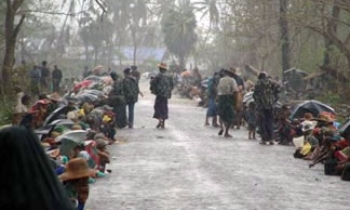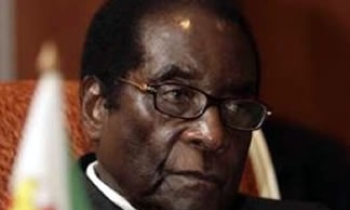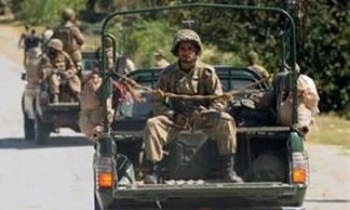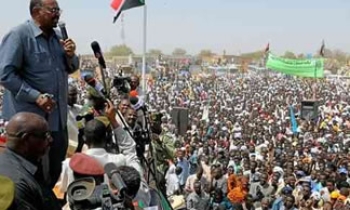Latha Gauri is a community reporter. On November 17, she took to the podium at the World Summit on the Information Society in Tunis the sole representative of a mammoth global grassroots caucus selected to speak at the plenary session.
Gauri works for Sneha, a voluntary organisation which networks over 500 villages close to the southern Indian city of Hyderabad nicknamed Cyberabad for its concentration of multinational companies dealing in information and communication technologies.
The city is also home to dozens of cable TV providers and a bustling media industry.
Yet, audiences in the village linked by Sneha including Gauri’s native village Marpally are shunning the constant lure of this media industry and tuning in to a TV channel that won’t even get a look-in in the upmarket areas of Hyderabad.
It’s called Namma TV’ Our TV and it works on a low powered system in the Ku- Band. Gauri is a newsreader, occasional reporter from Marpally, editor and anything else needed to get transmission up and running.
Namma TV’s fare is unusual in comparison with the major TV channels: it has local news, farming features and health alerts.
The presence of Gauri possibly the only media person to be given a slot at the WSIS plenary is symbolic of the failure of the traditional print and electronic media to meet the real needs of the information society.
It is a world far removed from the high-level discussions at Tunis, where the internet has sometimes been held up as a magic bullet to meet the world’s communication and information needs. For poor countries trying to juggle a host of development priorities with scarce resources, the internet often seems like a solution of the elite.
"The 400,000 citizens of Luxembourg have more bandwidth that the 800 million people in all of Africa," says Shashi Tharoor, UN Under-Secretary for Communications and Public Information.
It is no coincidence that Namma TV was born in the Indian state of Andhra Pradesh, of which Hyderabad is the capital. The state witnessed a print media revolution two decades ago that had media pundits rewriting all their theories about what it takes to sell newspapers.
A local media magnate, Ramoji Rao, started a Telegu-language paper, Eenadu (Our land) and printed it in dozens of small towns. These highly-localised editions were full of reports filed by a small army of village-level stringers.
Within months Eenadu had become the largest selling paper in Andhra Pradesh and prompted many similar ventures all across India.
But two decades on, even Eenadu’s gloss appears to be wearing off. ICTs have enabled a shoe-string operation like Namma TV to carve out a small, localised and highly-focused niche for a vast, often illiterate village audience.
In the city of Bangalore, often called India’s Silicon Valley for its hi-tech industry, a volunteer organisation has set up community media centres that run a cable TV station, Namma Dhwani’(Our Voice). The TV station is entirely managed by villagers and focuses on local issues.
In the broad arena of alternative media in India, community-run FM radio looked like a good candidate to fill the information vacuum created by the mainstream TV and print media. But the promise is hamstrung by Indian government regulations that prevent privately-owned stations from broadcasting news.
The outlook is far better in Africa and Southeast Asia. Thanks to several non-governmental initiatives such as World Association of Community Radio Broadcasters (AMARC) and the Developing Countries’ Farm Radio Network, community radio is making a real difference to the lives of millions of ordinary people.
"Community radio is Africa’s internet. It reaches our most important audience: the illiterate and the hungry," says Food and Agriculture Organisaton expert Jean-Pierre Iboudo.
In India, faced with restrictive government regulations, communities fall back on their own print media, such as Namma Ooru Chevthi’, a small fortnightly newspaper published in the former French colony of Pondicherry. The latest issue of this successful venture highlights the plight of stone quarry workers and gives advice on coconut cultivation.
Villagers in Khichdipur in northern India have their own one-sheeter, which throws in jokes and an astrology column to lighten up serious reports on local problems.
And when nothing else is available, there’s always the spoken word that most traditional of communication technologies. The village square, a speaker and an upturned box is all one needs. It still works a humbling thought in our so-called Age of Information.
Anand Parthasarathy is Consulting Editor (Information Technology) for The Hindu









